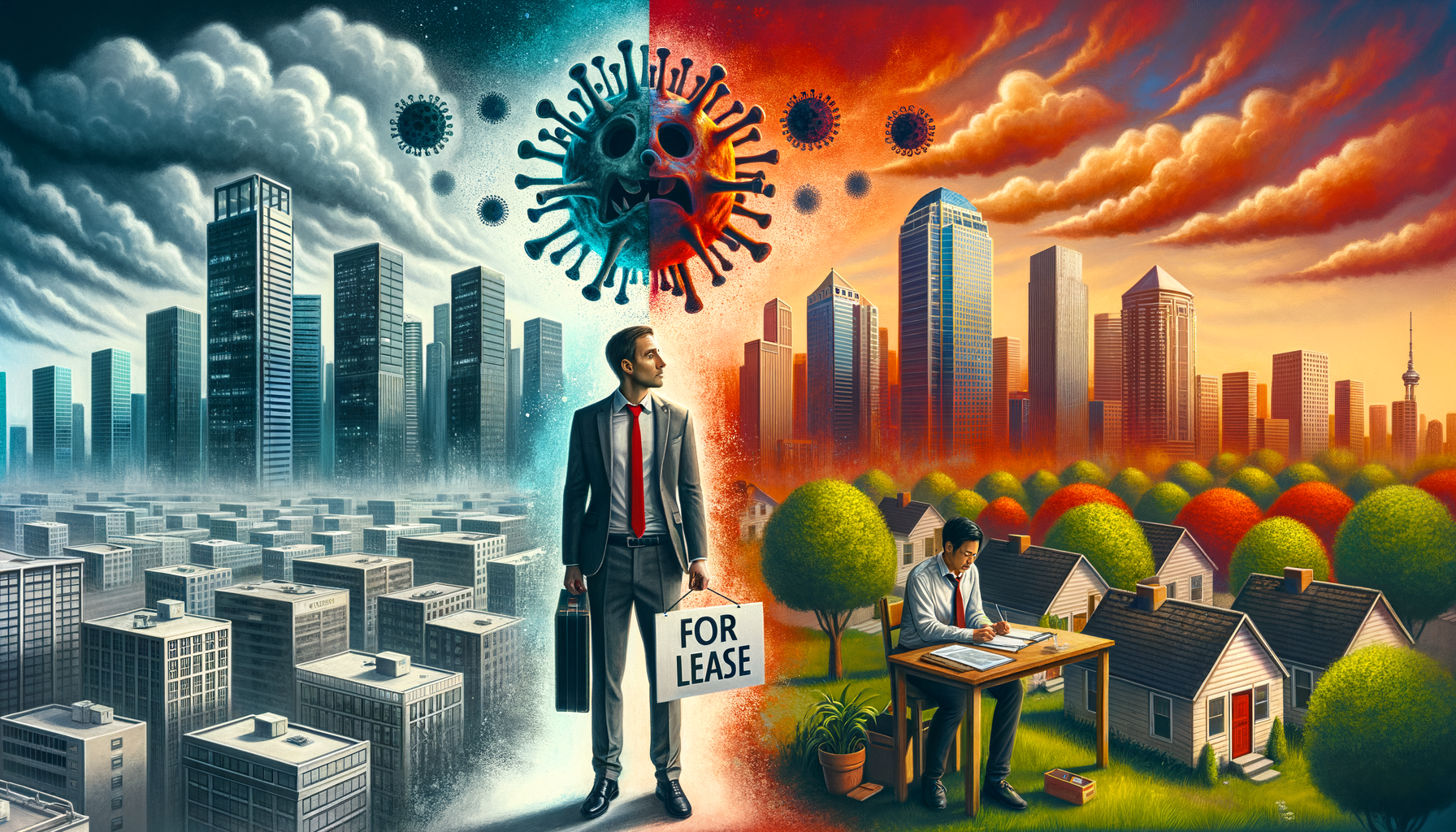“Unveiling the Half-Trillion Dollar Impact on Commercial Real Estate Market”

The global commercial real estate market is currently experiencing a significant downturn, with predictions suggesting a decrease of half a trillion dollars in value. The cause? A culmination of many factors, primarily involving economic downturns fueled by the COVID-19 pandemic, resulting in setting trends towards remote work, negatively impacting commercial property values.
The remote work revolution has been a double-edged sword, advantageous to technology and communication companies, but equally damaging to the commercial real estate sector. Businesses are constantly exploring ways to reduce operating costs, and trimming real estate costs has become a significant strategy since the pandemic onset. This scenario directly affects commercial real estate, resulting in a reduced demand, thereby impacting property values. Lets take a deeper look into this phenomenon.
##The Rise of Remote Work
When the global pandemic started in early 2020, companies across the globe adjusted their working styles in response. Working from home became the norm rather than the exception, leading to a significant shift in the commercial real estate landscape. Businesses began to realize the numerous benefits this model provided, from saving commuting time for their employees, to reducing the immense overhead expenses that come with maintaining a physical workspace.
In essence, the concept of “office space” as we know it has changed, perhaps indefinitely. With the rise of digital platforms like Zoom, Microsoft Teams and Slack, the necessity for physical office spaces is dwindling. While this digital transition might seem to be a temporary response to the pandemic, the sentiments among business owners suggest otherwise. Many companies have opted to prolong or even make permanent their remote work strategies.
This seismic shift in the workspace scenario is affecting the real estate market significantly. The decreased demand for commercial spaces has led to an oversupply, pulling down property prices. Our picture is beginning to form – as businesses migrate towards long-term remote working strategies, commercial real estate is facing the brunt through diminishing values. But, is remote work the only villain here?
##Entrepreneurial Opportunities or Corporate Curse?
This shift has also ushered in a new wave of entrepreneurial opportunities, promising a silver lining amid the gloomy prognosis for commercial real estate. In the face of crashing demand for traditional office spaces, new workspace arrangements have been evolving.
The concept of shared office spaces or coworking spaces had started getting some traction even before the pandemic. The current dramatic changes in workspace demand have further pushed this model into the spotlight. Shared spaces offer a win-win solution, cost-effective for businesses and individuals while ensuring maximum usage of commercial properties. As these spaces usually have flexible rental agreements, compared to traditional leases, they have gained immense popularity among small businesses and startups in particular. Could this assist the commercial property crisis to some degree?
As with any significant shift, there exist certain challenges as well. Insurance for commercial properties is one such potential hurdle. Prior to the pandemic, the property insurance market was already tightening up. Today, the market conditions are even tougher. The reduced demand and occupancy rate for commercial properties are contributing to the insurers’ reluctance to underwrite such risks, making it harder to secure affordable coverage. The vicious cycle continues.
##Commercial Real Estate: A Look Around the Globe
Looking beyond North America, the rest of the world also reflects a similar pattern, further highlighting the global nature of this trend. Inspired by the likes of WeWork, Asia’s rising coworking spaces market has been blooming over the past few years, demonstrating resilience even during the pandemic.
In contrast, Europe’s commercial real estate market presents a gloomier picture. Many cities are facing an exodus of corporations, leading to a spike in vacant commercial properties. The annual commercial leasing activity across key European cities like London and Paris fell by 43% and 40% respectively in 2020, painting a challenging picture.
##Residential Real Estate: The Magnifying Glass
While discussing the impacts of COVID on the real estate industry, we cannot overlook the trends in the residential real estate market. The residential property market has surprisingly been resilient in these tough times, reflecting a contrasting trend to the commercial sector. This dichotomy is largely due to the increased demand for spacious and comfortable homes for the new work-from-home employees, driving the prices up.
The good news is the recent boost in residential sales is the result of a fundamental demand shift, as opposed to speculative trading often blamed for past asset bubbles. This spells well for a healthy and sustainable growth for the residential property market in the long run.
##Where Do We Go From Here?
The real estate industry is complex and deeply intertwined with various other sectors of the economy. Thus, its ripples of impact will echo throughout the economy. Commercial property owners, insurers, and tenants alike are now on the lookout for innovative ways to navigate through this change. Investors, too, have an opportunity to reassess their portfolios and adjust their strategies in line with the evolving landscape.
Will we see commercial real estate rebound, or will it continue caught in this downward spiral? Only time will tell. One thing’s for sure – COVID has fundamentally altered the way we perceive workplaces and had a lasting impact on real estate trends. The rules of the game are changing. It would be a blunder to overlook these trends. Not just for real estate professionals and investors, but for everyone aiming to thrive in the post-pandemic world.
Yes, we’re living in uncertain times. But with change comes opportunity. And who knows, conditions may soon right themselves, leading to a revived commercial real estate market boasting new shapes and possibilities. The key is adaptation, as it is always the fittest who survive. This time, the survival of the flexible.
